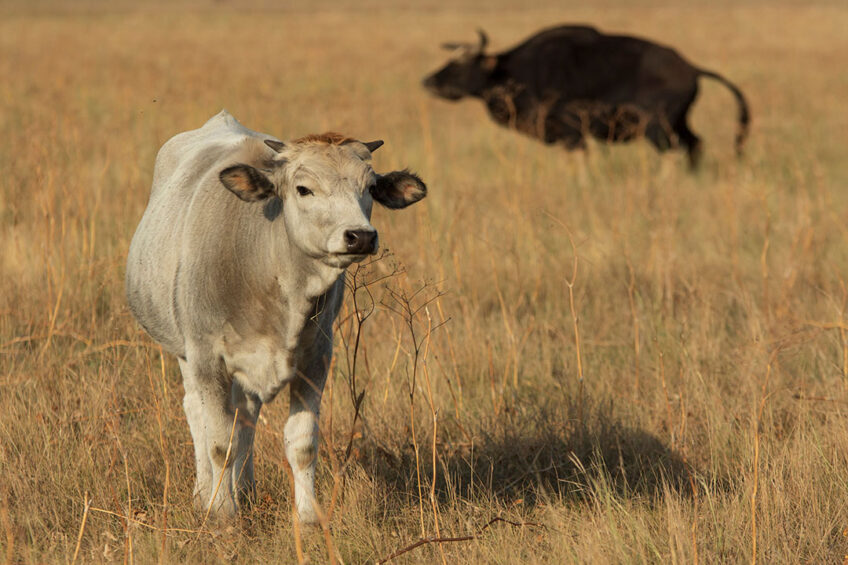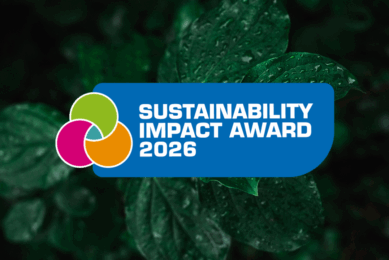Underutilised feed sources for ruminants

This article examines unusual feeds and their nutritional value and effects on ruminant production. Plus the comparison with conventional feed ingredients.
Feed ingredients looked at are; kitchen and restaurant disposals, newsprints, silage effluent, rumen contents, poultry litter, cattle wastes, and wood residues, all of which may have a promising future in the livestock industry, particularly in areas where the supply of conventional feeds is scarce.
Kitchen and restaurant disposals
These wastes contain valuable materials such as vegetables, fruits, meat, fish, eggs, etc., and are produced at an annual rate of around 45kg per inhabitant worldwide. The average composition of these wastes is shown in Table 1. Recently, attempts have been made to utilise waste in cattle feeding. The first experiment has been conducted in Germany, where more than 9,000 tons of kitchen and restaurant disposals are processed annually into animal feed by sanitisation, grinding, supplementation with flavouring agents such as molasses, pelleting, and eventually offering the product to the animal. Studies have shown that the use of these wastes in this way leads to a remarkable improvement in beef cattle production. The average daily gain of beef cattle fed on the processed wastes was 0.98kg which is much greater than the growth rate obtained with many other traditional feed sources.
Newsprints
A study was conducted to examine feed intake, digestibility, and performance of dairy cattle that were fed diets containing 10% shredded, ground, or pulped newsprints compared to the control diet (Table 2). The actual milk yield decreased with newsprints incorporated into the diet. However, considering the greater amounts of milk fat produced in these cases, the fat-corrected milk values (FCM) were greater for the newsprint diet. This is probably due to the high fibre content of the newsprints (about 15%) which is needed by the cow to maintain high levels of FCM (Table 3).
Silage effluent
Fresh, uncontaminated, undiluted effluent from well-preserved silage can be fed to cattle. Daily intake can be up to 45 litres (3.3kg DM) per day, which have a nutritional value of about 2.5kg of barley. In terms of animal performance, it was reported that milk yields and fat, protein, and lactose contents tended to increase for cows receiving effluent with concentrates. The increases in milk yield were small, however, relative to the amount of DM consumed, indicating reduced feed conversion efficiency when effluent was fed. Intakes of silage stored in the presence of effluent tended to be lower than those of silage from which effluent had been drained, but milk yield and milk composition were unaffected.
Rumen contents
Rumen contents are important wastes resulting from the slaughterhouses of cattle and sheep. Each animal produces about 25kg of these wastes (on a fresh weight basis), which means that millions of tons of these materials are wasted annually without benefiting from them except for using them as fertiliser for agricultural lands and grazing areas.
Rumen waste contains about 12.5% crude protein, which is a high-quality protein containing all the essential amino acids in the same proportions as in other standard proteins such as egg yolk protein or corn gluten. These wastes also contain about 5.2% fat, about 25% crude fibres, high levels of calcium and phosphorous, and some vitamins such as vitamin B complex, which is naturally manufactured in the rumen by microorganisms such as bacteria and protozoa. It should be noted here that these components are not significantly affected by environmental, dietary, or manufacturing factors. That is, they are more chemically stable under different conditions compared to other materials, which better helps in planning nutrition programs and the nutritional needs of animals when using these wastes in their diets.
Studies have indicated that adding rumen contents by up to 15% of the total animal diet did not adversely affect the feed intake, daily growth rate, or feed efficiency. Rather, animal production, in this case, was equal to production in the case of feeding oats or hay made from pasture plants.
Poultry litter
Studies comparing the performance of beef cattle fed poultry litter or corn silage showed an improvement in daily weight gain and dressing percentage. The increased animal performance fed poultry litter could be attributed to the increased values of protein and essential minerals and the changes occurring in the volatile fatty acids (VFA) profile in the rumen. Animals fed poultry litter frequently had a higher ratio of propionate-to-acetate in the rumen, so the performance should then be improved.
Dairy cows also respond positively to feeding poultry litter. The amount of litter to be included in the diet should, however, vary depending on the level of milk production. Low-producing cows could be fed poultry litter as a sole source of nitrogen without adversely affecting milk yield, flavour, or composition. For high-yielding cows producing over 28kg of milk daily the amount of poultry litter to be fed should not exceed 30% of the total nitrogen source in the diet.
Sheep were, in some cases, unable to utilise poultry litter very well. The growth rate of lambs was 150g when fed poultry litter compared to an average daily gain of 210g when other nitrogen sources were included in the diet. In other cases, however, sheep proved to be good utilisers of poultry litter.
Cattle wastes
The amount of manure produced by 1,000 dairy cows is about 37 tons/day, which poses potential pollution threats to air and water, though they represent potential feed sources when properly processed, formulated, and preserved for this purpose.
In one study, cattle manure was washed, screened, and treated with sodium hydroxide, calcium hypochlorite, or sodium chlorite to increase the DM digestibility of the waste. It was then mixed and ensiled with grass hay. The ensiled mixture was termed “wastelage” and consisted of 57 parts manure and 43 parts hay. Feeding a diet formulated to contain 40% wastelage and corn to steers produced rate and efficiency of gain similar to feeding conventionally formulated high-concentrate diets. Further, the waste did not have any harmful effect on the carcass quality of beef cattle or the composition or taste of the milk when fed to dairy cows.
Wood residues
It has been shown that aspen sawdust can replace 30% of a conventional diet in dairy cows producing 20kg of milk daily without reducing the intake of digestible dry matter or the production of milk. Cows consuming the aspen sawdust also maintained a normal milk fat level. At certain stages in the life cycle of dairy cows, the dilution of the diet with wood allowed regulation of energy intake and hence prevented unwanted fattening. In one study, grain intake was controlled by including up to 45% wood fibre with grain in the diets of dairy cows.
References are available from the author upon request.











